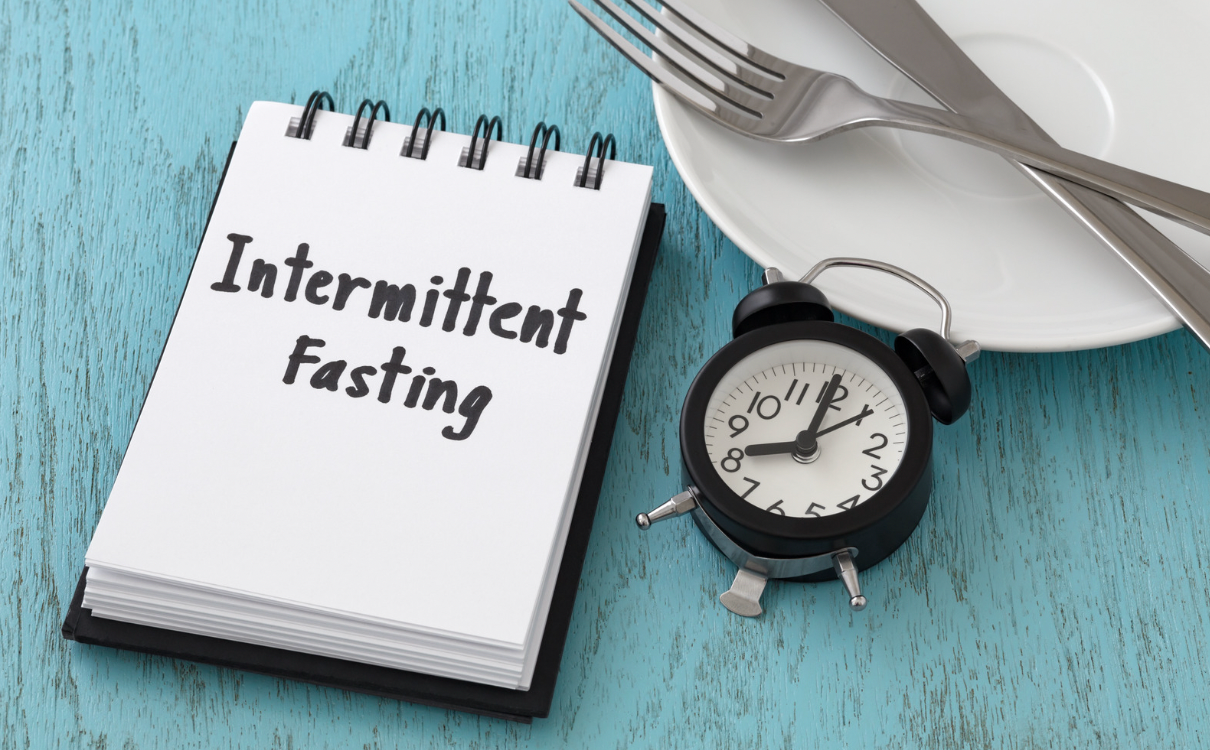Intermittent fasting has taken the world by storm with its incredible benefits ranging from anti-aging to gut health. While it is known as a “non-diet” approach by many, you must still monitor your food choices during eating hours to get the best results.
In this blog, we are diving into the different fast types, the health benefits of fasting, and how to eat during non-fast hours.
What is intermittent fasting?
Intermittent fasting has nothing to do with starving or restricting yourself. Intermittent fasting is basically eating on a schedule. You pick a length of time you will not eat that ranges from 15 to 20 or more hours.
Timed eating or intermittent fasting naturally cuts back on mindless eating that happens to many of us during the day or night. Peer-reviewed research has also shown various benefits, including reduced fat tissue, increased lean body mass, decreased risk for chronic diseases, and increased longevity. (1)
Types of Fasts
The 16/8 Method: This is one of the most popular methods. It involves fasting for 16 hours and eating for 8 hours over 24 hours. For example, you stop eating at 6 PM and start eating again at 10 AM.
The 5:2 Fast: This fasting protocol involves eating your regular diet for five days and then cutting food intake to about 500 calories for two days in a row.
The 15/9 Method is my favorite because it is relatively easy to accomplish just by cutting out nighttime snacking. The 15/9 Method involves fasting for 15 hours and eating for 9 hours over 24 hours. For example, you stop eating at 6 PM and start eating again at 9 AM.
The Eat-Stop-Eat Method: This eating plan recommends you fast for 24 hours twice a week. For example, you might finish dinner at 6 pm one night and then resume eating at 6 pm the next night.
Alternate-Day Fasting: This method alternates between regular eating and fasting days.
Getting Your Max Benefits
Regardless of which fasting method works best for you, the quality of your diet still matters. You must eat high-quality proteins during eating periods to prevent muscle breakdown and build muscle mass.
High-quality protein foods are foods that contain all essential amino acids. Amino acids are the building blocks that make proteins. The body cannot make nine essential amino acids, so we must eat them in our diet. These essential amino acids include histidine, isoleucine, leucine, lysine, methionine, phenylalanine, threonine, tryptophan, and valine. (2)
Designer Wellness's full line of protein products contains high-quality proteins. Designer Soy and Designer Lite contain soy protein. Soy is the only plant protein that contains all essential amino acids and is easily absorbed by the body. (3) For those following a plant-based diet, including soy protein during your eating window will be incredibly beneficial.
Whey protein is another 100% absorbable protein containing all essential amino acids. Research shows supplementing with whey protein can increase fat loss and reduce muscle loss when on a weight loss program. (4) Designer Wellness uses high-quality whey protein in our Designer Whey, Women’s Aria, Designer Lite, and our protein on the go Protein Smoothies.
Eggs are one of the easiest high-quality proteins to add to your diet. Hard-boiled eggs are portable and an easy snack. Plus, making eggs on your stove top takes only a few minutes. Designer Wellness recognizes the incredible benefits of eggs and has created Designer Egg protein powder. This is a great high-quality protein option for those who do not tolerate soy or whey protein well.
Other high-quality proteins to include in your diet are fish, seafood, chicken, beef, and dairy. (5) A Designer Wellness protein shake for your first meal, tofu, chicken, seafood, or dairy in your meals and snacks afterward are a great way to eat during non-fasting hours. Check here for a 3-Day Sample Menu.
When breaking your fast, it’s important to break it with protein to prevent big swings in your blood sugar, decrease hunger, and help you meet your protein goals.
How much protein?
Protein recommendations vary from .8-1.5g per kilogram of body weight, depending on your health and activity level. (6) (7) For example, a 140 lb person is 64 kg (1 kg=2.2 lb). Depending on activity level and health status, this person should eat at least 52-96g of protein.
Benefits of Protein Intake
Preserve Muscle Mass: Protein is needed to maintain muscle mass ametabolism during eating times. Including high-quality protein at each meal will help your body absorb protein and meet your protein goals.
Curbs Appetite: Protein decreases hunger and promotes satiety. Including protein-rich foods during your eating window will reduce the chances of overeating or binge eating during eating times.
Supports Metabolism: The thermic effect of food (TEF) is the energy expenditure needed to digest and absorb food. Protein has a higher TEF than carbohydrates and fats, meaning it burns more calories to digest, thus boosting your metabolism. (8)
Bottomline
Intermittent fasting paired with high-quality proteins is a powerful tool to promote health and longevity. Explore Designer Wellness’s full line of high-quality proteins to help you achieve your fasting goals.
**When starting a fasting regime, working with a qualified health professional such as a doctor, endocrinologist, and registered dietitian nutritionist is essential. Those who should not fast include people with a history of an eating disorder, pregnant women, and lactating women. If you have any health condition, always consult your doctor first.

